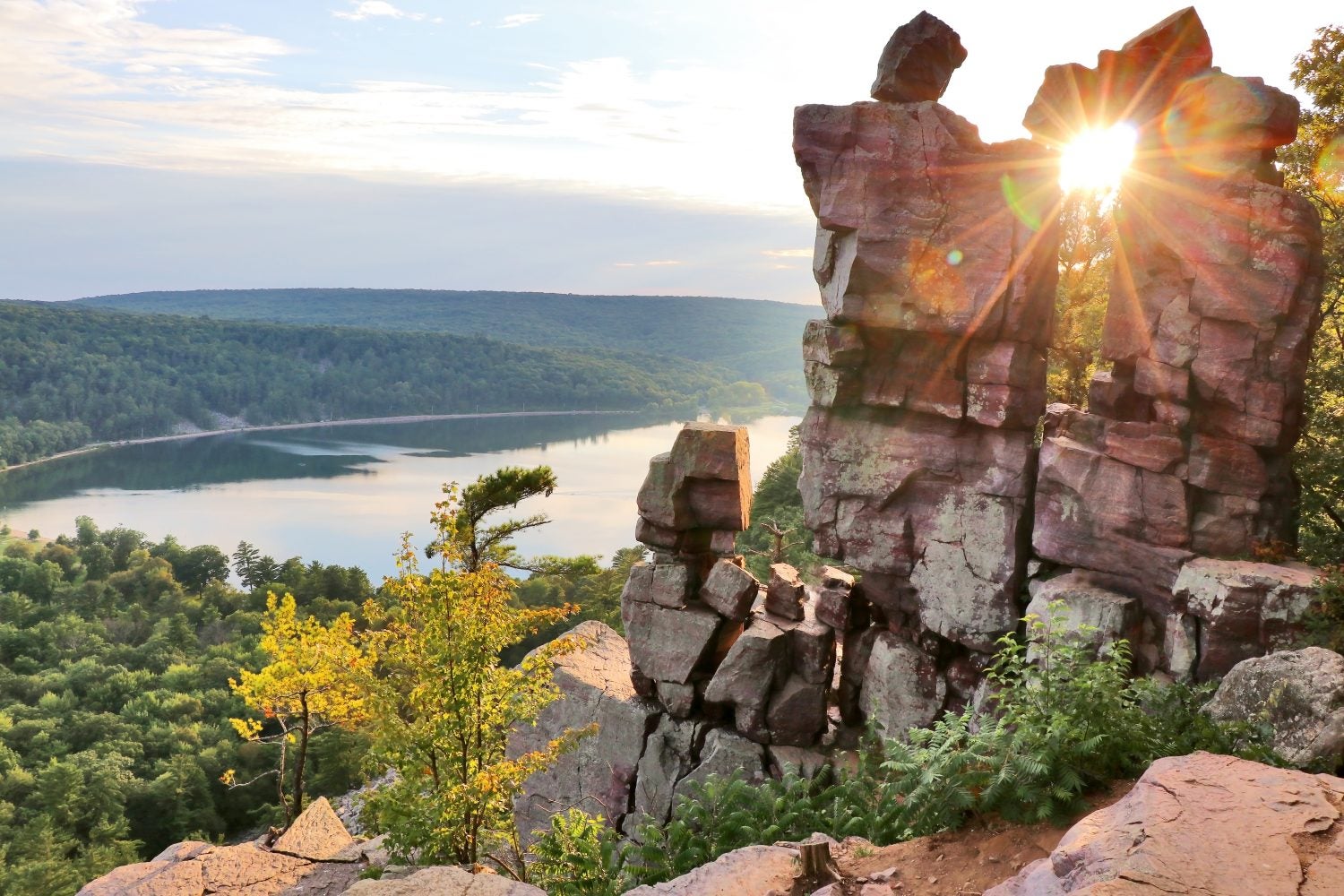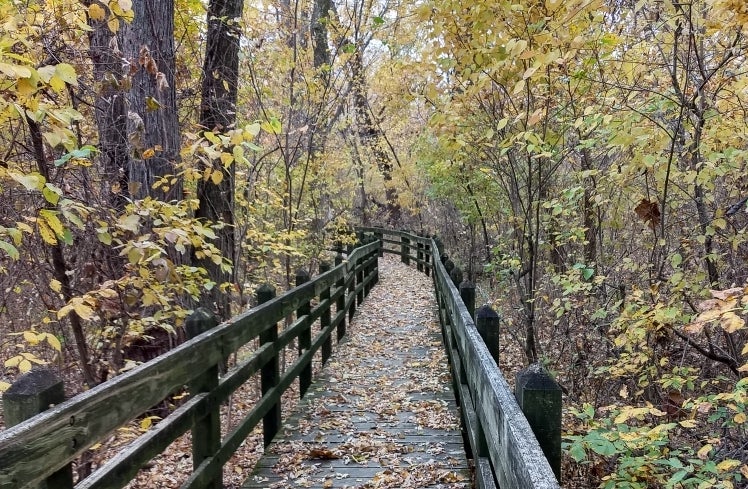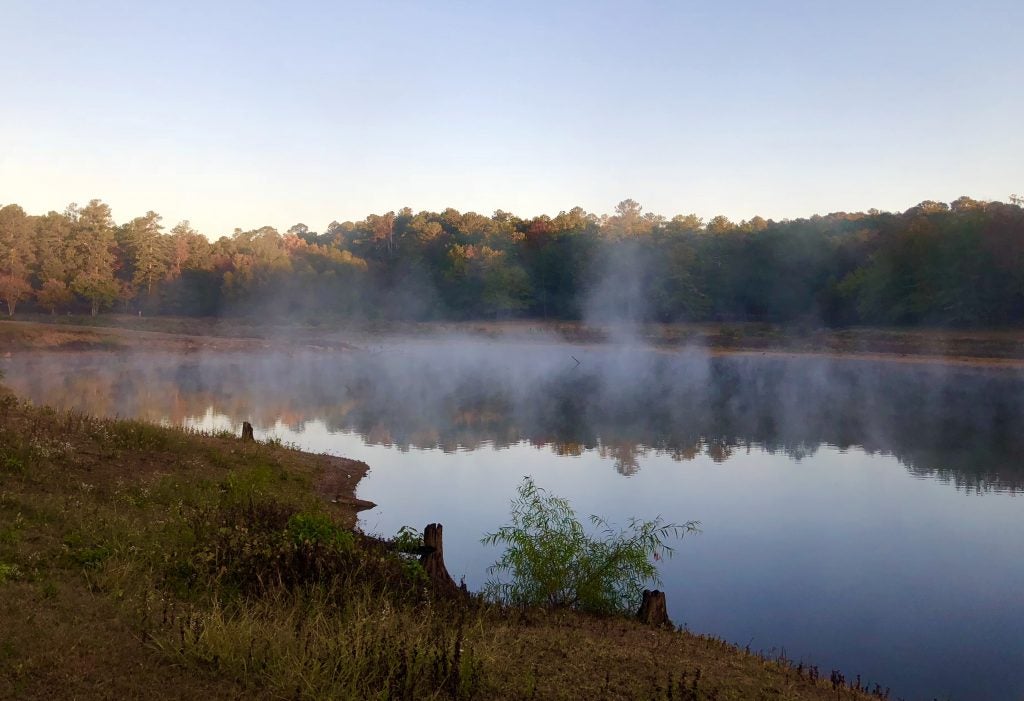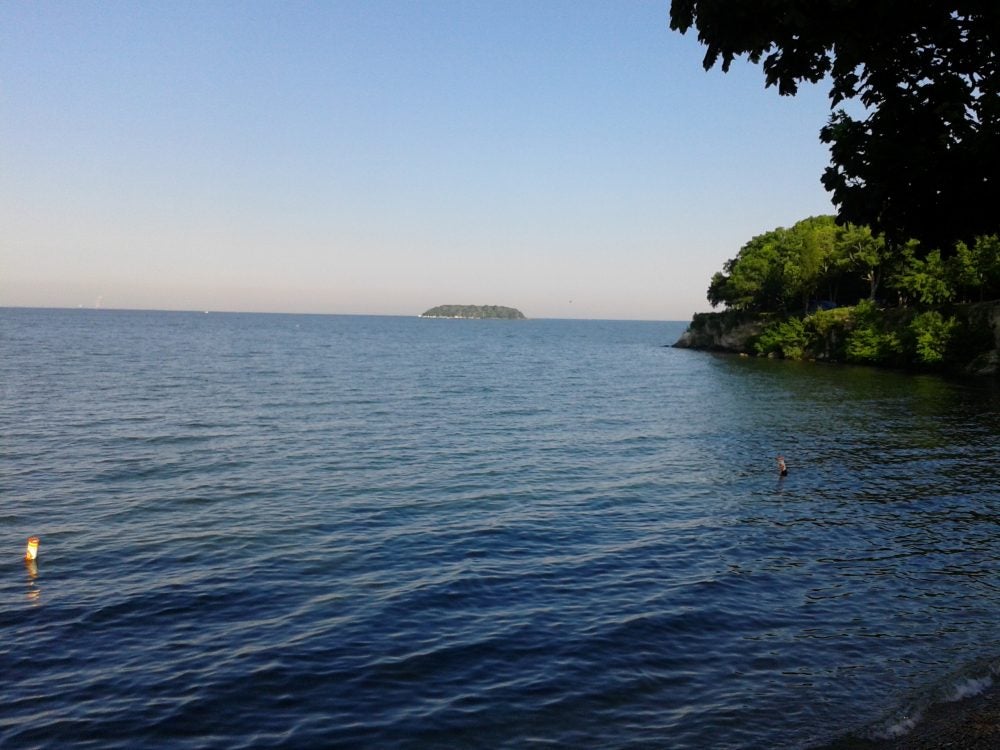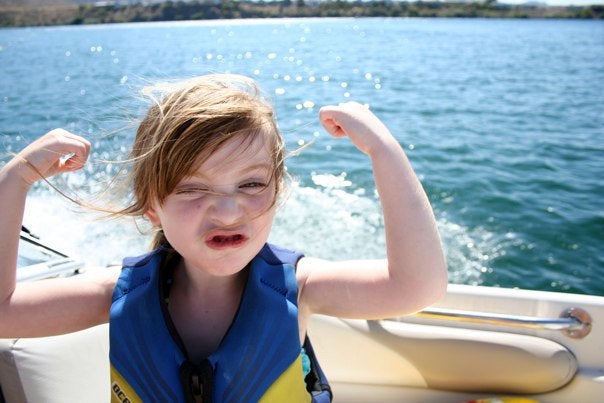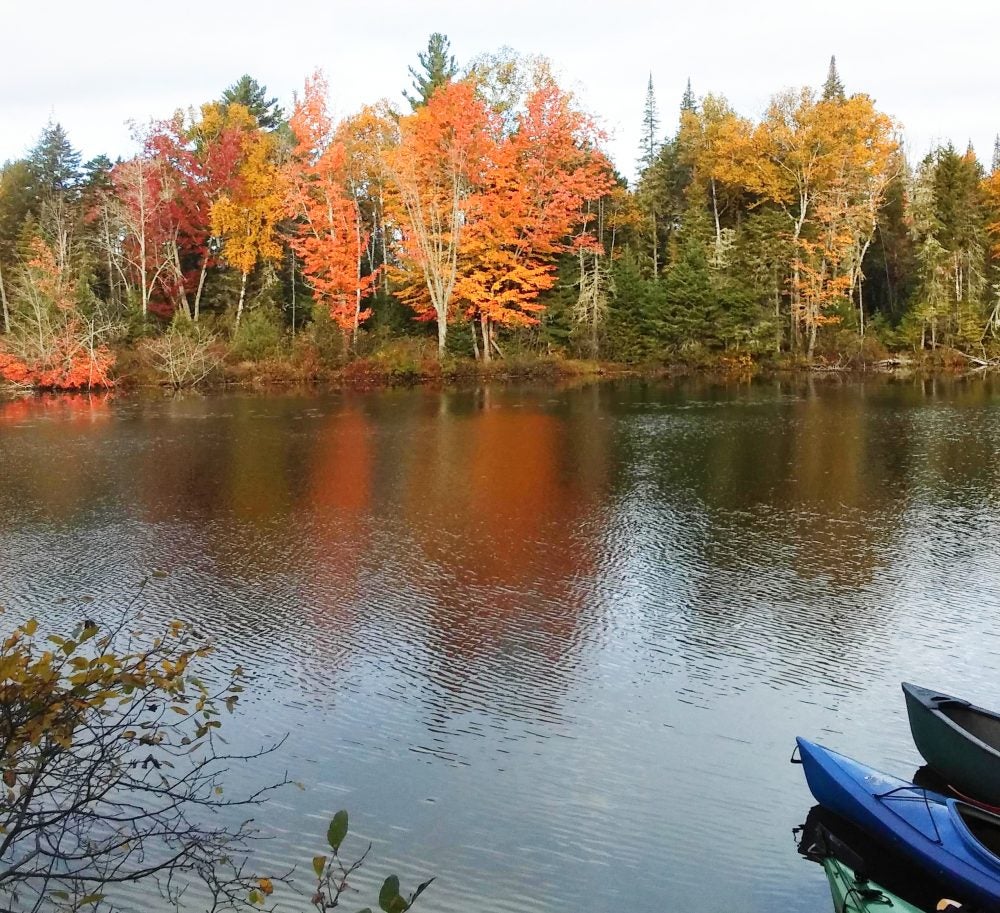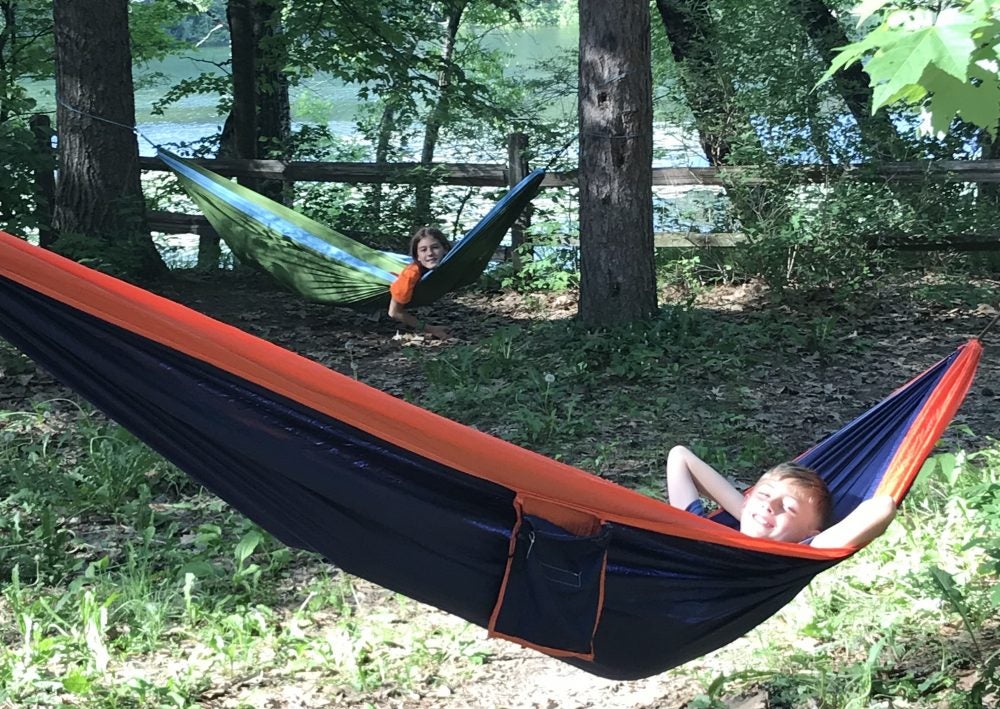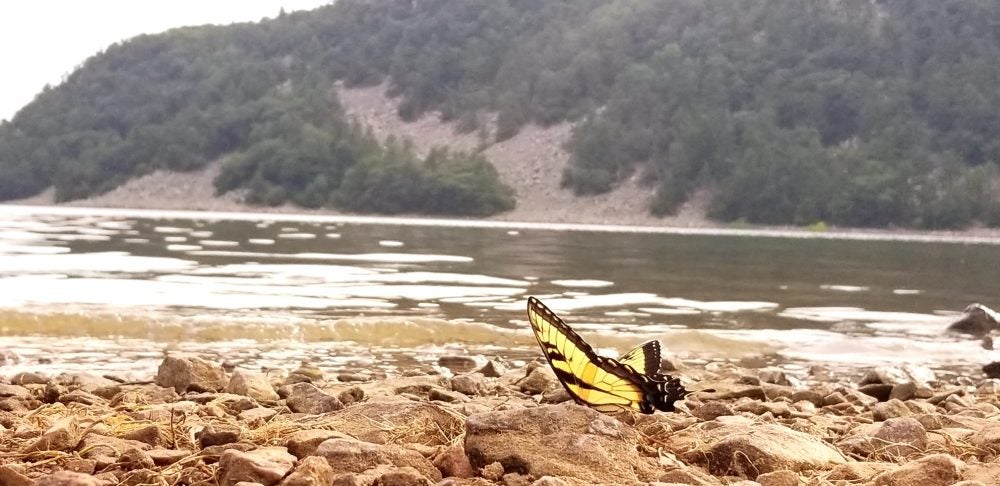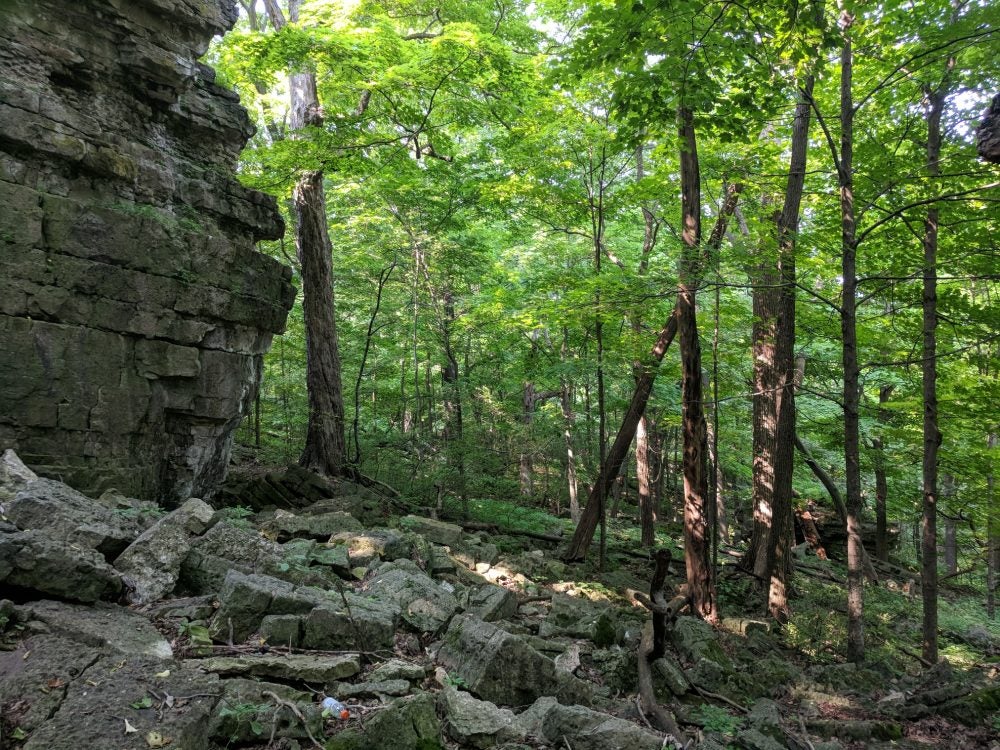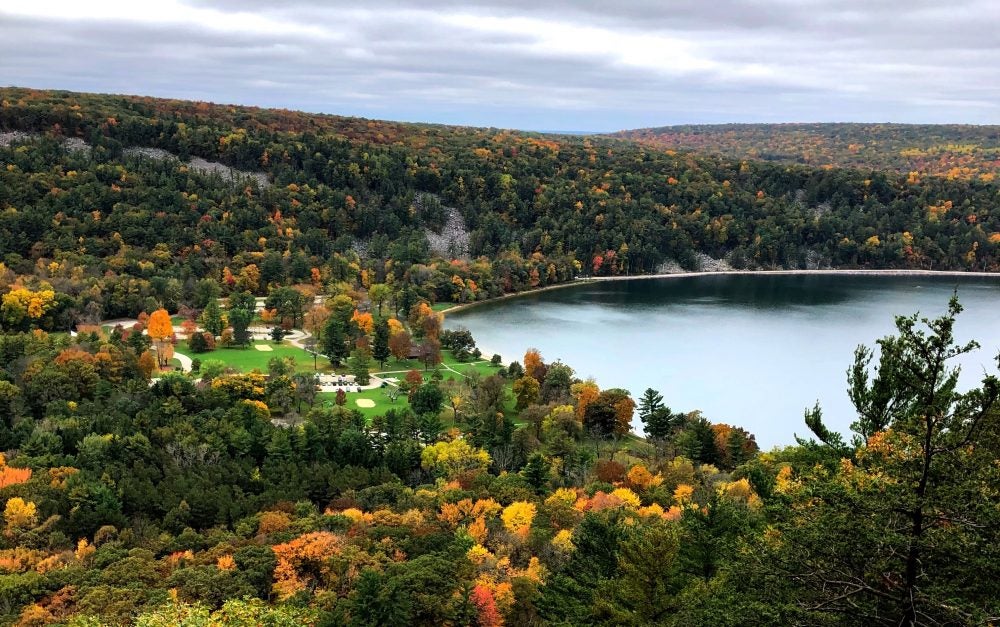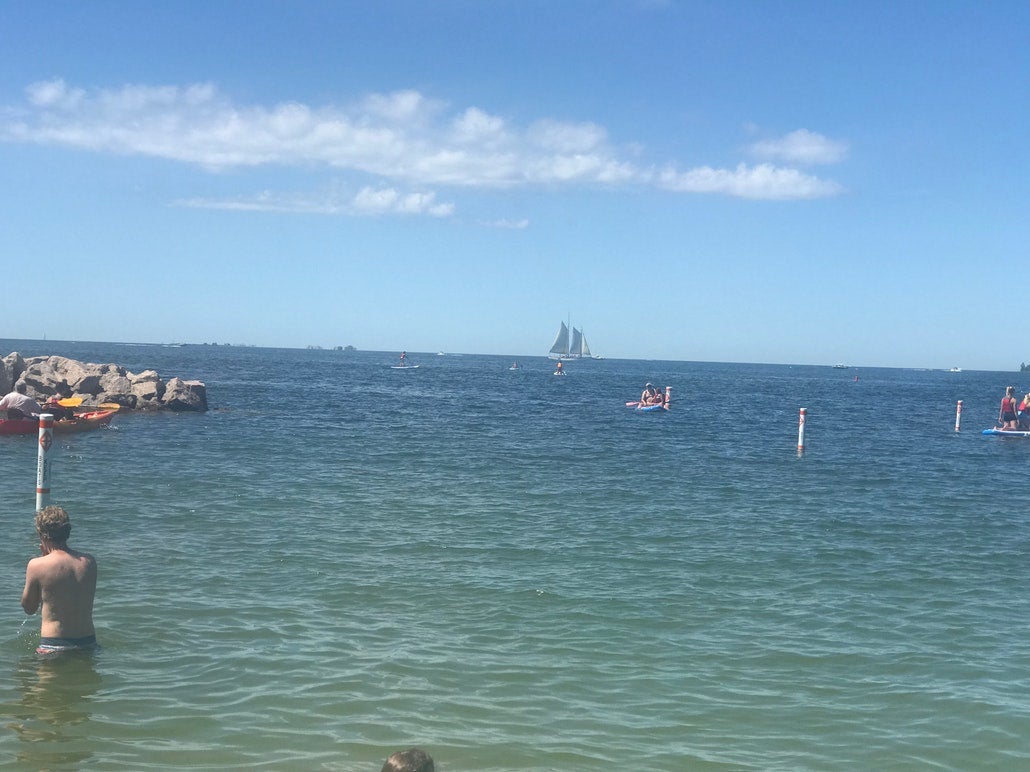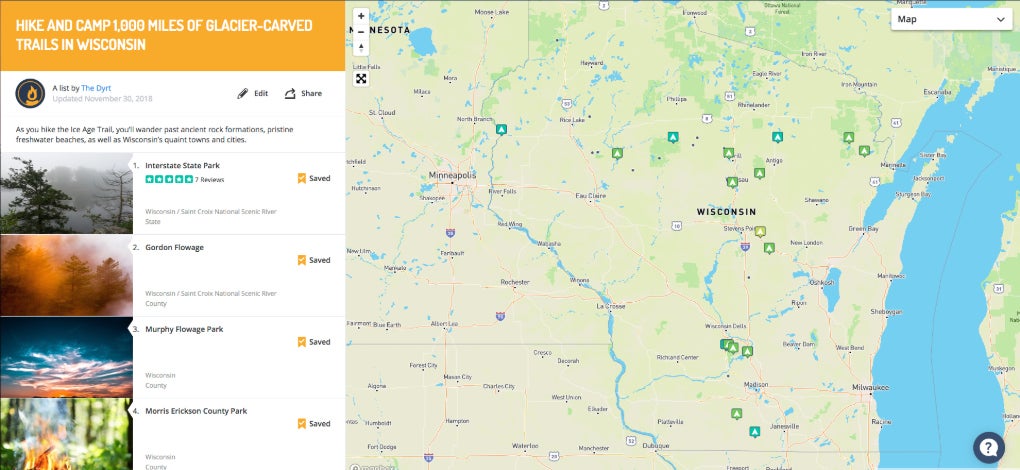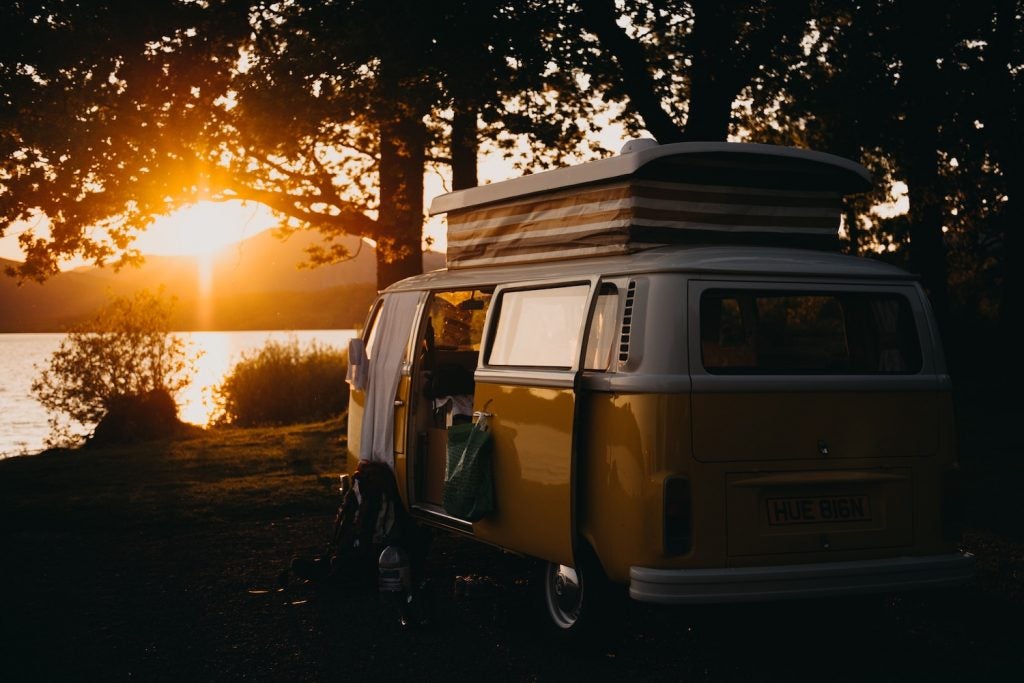This Ice Age Trail article was brought to you by Brunton, the makers of the best backpacking compass for all of your navigational needs while thru-hiking, mountaineering or day hiking. These compasses are lightweight, easily fit in your pocket and provide fast and accurate information.
Sixty one years ago, a Milwaukee lawyer named Ray Zillmer wrote a letter to the then-regional director for the National Park Service, Daniel Tobin, recommending that a new National Park be added to the department’s roster. What he outlined was something that had never quite been tried before, a brand new parks concept outlining what is now the Ice Age National Scenic Trail.
Zillmer called for a long narrow park that, rather than containing a swath of land for preservation, followed the edge of the massive glaciers that shaped Wisconsin’s landscape for over a thousand miles. He suggested calling it the Wisconsin Glacier National Forest Park, something you won’t find on any map today.
Originally, Zillmer intended this new park to be an offshoot of Kettle Moraine State Forest, which he was also instrumental in establishing.Though it would take another three decades for Zillmer’s new idea to come to fruition, it did make it off the page eventually. Thanks to his letter to Tobin, the Ice Age Trail eventually blazed a meandering path through Wisconsin’s hardwood forests and quartz peaks.
How the Ice Age Trail Got Its Start
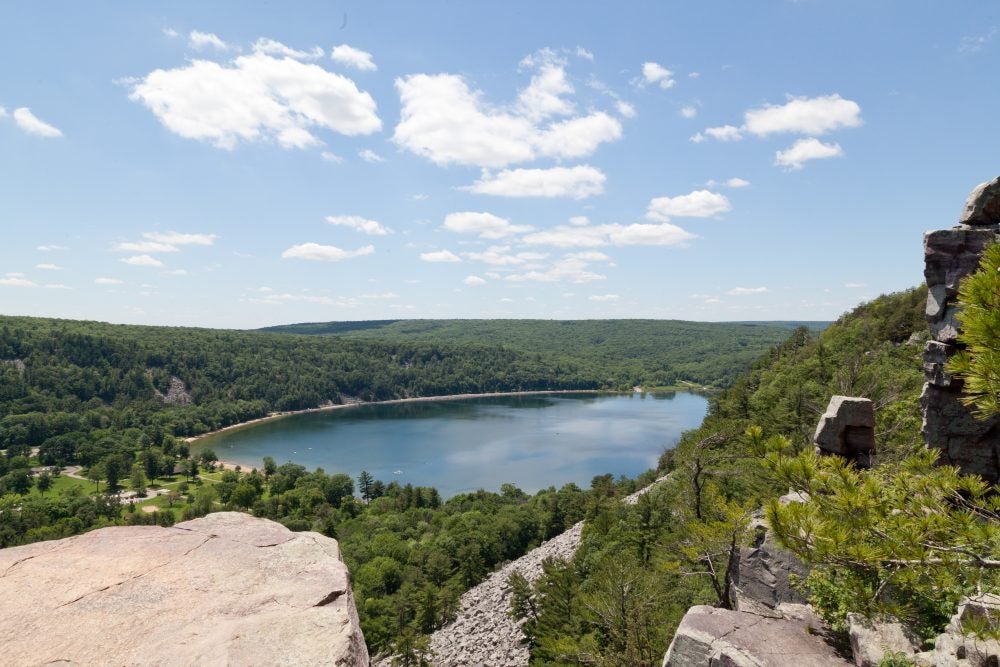
Image from The Dyrt camper Lauren M.
When Zillmer first imagined the Ice Age Trail in 1958, thru-hiking ultra-long trails was still a relatively new concept. It had only been ten years since army veteran Earl Shaffer had completed the first thru-hike of the Appalachian Trail, during which time Zillmer had been busy in his own neck of the woods. The mountaineer and conservationist, who Congressman Henry Reuss once described as “a salty soul, much given to Ben Franklin aphorisms,” had not only explored every inch of his native Wisconsin, but had also Minnesota, British Columbia, and other chilly, wild places.
It was in the North Country that Zillmer fell in love with glaciated landscapes, and became intimately acquainted with moraines—the debris fields that follow the contours of the places once covered by massive ice sheets. While interest in state and national parks had been fueled by marketing, a rise in disposable income and the arrival of the automobile, outdoor recreation was still a far cry from the booming industry it is today. Neither Zillmer nor the National Parks Service had the vocabulary to describe the end result. In the end, it would eventually be named one of the country’s eleven National Scenic Trails.
Unfortunately, Zillmer died only a couple years after writing to Tobin about his grand vision. Fortunately, however, he had sparked enough interest and momentum within the state for others to carry on his legacy. Between 1958 and 1980—wherein President Carter signed the law establishing the Ice Age National Scenic Trail— Wisconsin and the Ice Age Park and Trail Foundation had worked to acquire the land necessary for the trail and begin its development. That project continues in the present day.
How to Navigate the Ice Age Trail
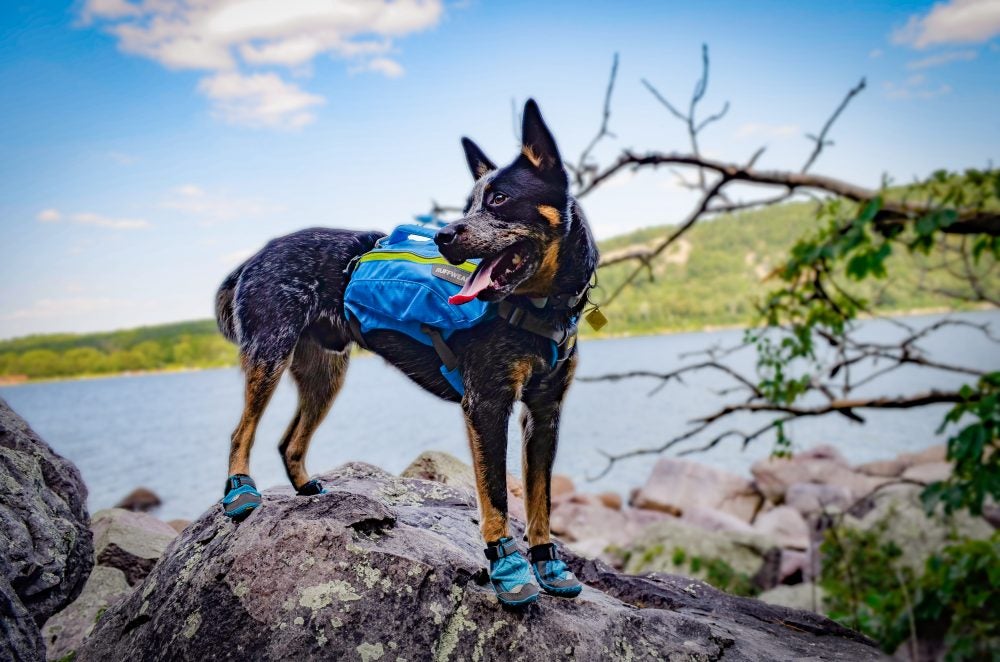
Image from The Dyrt camper Selah S.
Like its cousin the North Country Scenic Trail, the Ice Age Trail isn’t entirely complete. Most of its 1,000 mile expanse is blazed, but some pieces have yet to be connected, requiring hikers to use country roads or hike the to get from segment to segment. Nevertheless, the Ice Age Trail is an epic walk through time, and through many layers of midwestern geology.
Because the Ice Age Trail isn’t entirely complete, and because it wanders through rural, remote river valleys, steep cuts in the mountains, and even past cave entrances, it’s important to rely on trail signs and other guidance from experienced hikers, rather than your phone or GPS to navigate.
This is a trail that calls on hikers to navigate the old fashioned way—with a topographical map, a compass, and a little math. You don’t have to go all out on the best backpacking compass money can buy, but you should definitely invest in quality equipment you can trust to keep you safe.
That said, there are several online resources to help you navigate the Ice Age Trail. One is the official hiker resource map. The Ice Age Trail Alliance has even put together an official app full of information about the trail, including parking, camping, and water resources.
Also available are official atlases and guidebooks in both digital and print formats, a commemorative Ice Age Trail Thousand-Miler Map & Checklist, a comprehensive print guide to Ice Age Trail geology. For those who prefer section hiking to thru-hiking, the Ice Age Trail Alliance also has numerous recommended segments and backpacking routes, complete with navigation information.
There will be several opportunities to resupply along the way, especially when you get close to the bigger cities along the Ice Age Trail. Restock your pack with, say, more fuel for your camping stove or a warmer parka at the Fjallraven store in Madison. There’s REI locations in Madison and Milwaukee, too, if you find yourself in need of backpacking meals, new boots, or the little odds and ends that make your big hike easier. It’s also a real treat to stop by Yellow Wood in Whitefish Bay, Wisconsin. They’re a locally-owned retailer who take a lot of pride in stocking quality products, from the best backpacking compasses to the warmest winter layers.
Learn about the Ice Age Trail’s Historical Geology

Image from The Dyrt camper Lee D.
One reason the Ice Age Trail requires some navigation skills and your best backpacking compass is thanks to the unique geology that inspired Ray Zillmer. Along the 1,200 miles of the Ice Age Trail, you’ll encounter a variety of topography. Much of the trail follows the contours of the glaciers that once covered the majority of Wisconsin at various points in its natural history. Indeed, much of the trail weaves through Kettle Moraine State Forest, named for the region’s moraine—the term geologists use to describe the scattered boulders and sediments carried by glaciers.
Over time, the bottom most layer of any glacier will melt, forming an icy river under the glacier’s surface. That flow seeps into mountain rocks and soil, breaking them up and carrying pieces down into valleys that are deepened and widened by the glacier’s presence. Over time, glaciers and the moraines they produce form the rolling hills and symmetrical, U-shaped valleys. When the glacier recedes, sometimes the deep grooves carved into the land by the boulders and scree dragged along by glacial activity turn into lakes or rerouted rivers.
You can see the diversity of Wisconsin’s landscapes along the Ice Age Trail. The Western Sands are made up of huge piles of sediment deposited by glaciers, in some places accumulating up to 600 feet thick over the bedrock. That’s made Wisconsin surprisingly attractive to the country’s burgeoning fracking industry. Those sandy hills are dotted with glacial lakes left behind over the centuries, as well as wetlands and marshes that give way to forests of jack pine, northern pin oak, and red pine.
In the region surrounding Lake Winnebago, the largest lake in Wisconsin, there are 158,913 acres of public land available for outdoor recreation. Just 12,000 years ago, however, much of those acres laid beneath an even larger lake—Glacial Lake Oshkosh, formed when the Green Bay Lobe of the Laurentide Ice Sheet backed away from what is now the Packer’s home turf.
Like many landscapes formed by glaciers around the world, the Lake Michigan coastal regions of Wisconsin are a mixture of flat, marshy lowlands, conifer swamps, and rolling hills carved by the path of many ice sheets. The region’s most notable geographic feature, however, is the start of the Niagara Escarpment, a long, narrow dolomite plateau that runs all the way from Wisconsin to Niagara Falls—in fact, the Niagara Escarpment is where Lake Erie eventually spills over into Lake Ontario.
Things to See and Do Along the Ice Age Trail
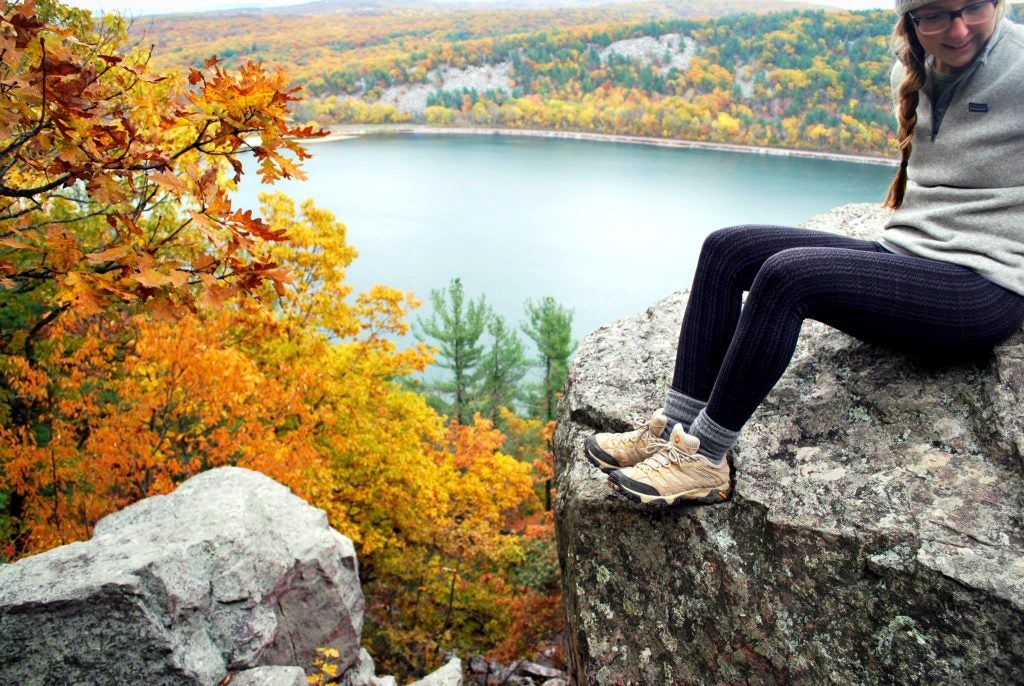
Image from The Dyrt camper Elise M.
As you hike the Ice Age Trail, you’ll wander not only past ancient rock formations and pristine freshwater beaches, but close to Wisconsin’s towns and cities, too. You’ll have a chance to stop and explore several state parks, but also off-trail diversions. Depending on the timing and nature of your trip along the Ice Age Trail, you might find an opportunity to join in volunteer work to maintain the route or blaze new sections.
You can also plan your trek around one of the races that are hosted along the trail at various times of year. The Ice Age Trail 50 takes place in the Southern Kettle Moraine forest in May, while the Kettle 100 takes place in the same park a month later. The Glacial Trail 50 is a fall event in the Northern Kettle Moraine, and the organizers of the Chippewa Moraine 50K wait for the spring thaw to start their race in northwestern Wisconsin.
This being Wisconsin, there’s no shortage of great beer along the Ice Age Trail, either. New Glarus Brewing Company is one favorite, for example, just across the street from New Glarus Woods State Park. If you’re craving a bite, you can head a little further up the road to Glarner Stube, a quirky Alpine style restaurant with local beers and a Swiss menu.
Octopi Brewing in Waunakee, Wisconsin has hosted educational events put on by REI and the Ice Age Trail Alliance to educate prospective trekkers about what thru-hiking the Ice Age Trail is really like. Delafield Brewhaus created a special Ice Age Ale IPA with the slogan, “after you hike the trail, get your butt to the brewhaus for an Ice Age Ale!” And Wisconsin Brewing Company has sponsored trail days like Dane County’s Hike-a-Thon to promote the Ice Age Trail and improve several of its segments.
Many of the small towns along the Ice Age Trail have lots to see and do. For example, Two Rivers, Wisconsin is home to the Bernard Swartz House, which was designed by Frank Lloyd Wright. In Manitowoc, Wisconsin you can visit the state’s Maritime Museum before tucking into Wisconsin’s supper club culture at Green Street Food & Spirits. Between the two towns is Spirit of the Rivers, a massive bronze series sculpted by R.T. Wallen.
Another way to make your hike extra fun is to participate in ColdCaching, the Ice Trail’s own geocaching and earthcaching challenge. Participants can check out ColdCache Park Packs at eight different locations along the trail to find hidden treasures in twelve Wisconsin State Parks or Forests.
That’s just one way that the Ice Age Trail alliance is trying to get families and young people more excited about spending time outdoors. The Saunters program is part of the Every Kid In a Park nationwide initiative. The goal of Saunters is to get kids engaged in the world around them by using the Ice Age Trail as an outdoor classroom, and even taking kids on multi-day backpacking excursions as part of their curriculum.
How to Camp Along the Ice Age Trail

Image from The Dyrt camper Jean C.
Because the Ice Age Trail isn’t as complete or established as other long-distance thru-hikes, it relies on plenty of easements and arrangements with private landowners. That makes it ultra important to camp only where explicitly allowed, so as not to wear out any welcome and result in a change of the Ice Age Trail Alliance’s planned route.
If you’re camping in Wisconsin on public lands, it’s safe to engage in dispersed camping as long as you adhere to Leave No Trace best practices. The only exception to that rule is on the portions of the trail that sit south of Langlade County. Hikers concerned about traversing 1,200 miles in the narrow Wisconsin warm season will be relieved to know that tent camping isn’t your only option. Throughout the eastern section of the trail, there are a season of backcountry huts that would put Colorado ski country to shame. There are also a variety of established and primitive campsites along the way, so hikers need not worry about being left out in the cold.
Make your reservations as far in advance as possible, and you can rest easy knowing that at least some of the stops on your journey will be warm and relatively cushy. Camping along the Ice Age Trail just takes a little homework ahead of time. Fortunately, you’ll be rewarded with beautiful lakes, rugged overlooks, and plenty of campgrounds that serve up ice cream. Don’t question it— just enjoy the perks of hiking through dairy country.
If slackpacking or a supported thru-hike is your style, the Ice Age Trail Alliance also offers a full list of inns, hotels, and B&Bs along the trail to help you plan whatever approach to the Ice Age Trail feels right for your timeline, budget, and fitness. This list will introduce you to 19 campground along the way to start your research, whether you’re going one segment at a time or for the whole hog. Don’t forget to save the full list of 50 campgrounds!
1. Gordon Flowage in Saint Croix National Scenic River, Wisconsin
Many of Wisconsin’s lakes formed naturally as a result of glacial activity, but some are man-made, or at least deepened by engineers by building dams. The lake formed upstream behind a dam is called a flowage, and you’ll encounter several along the Ice Age Trail.
The Gordon Flowage Campground is made up of 33 total camping sites, including 12 with electric hook-up and 21 non-electric campsites. Sites feature fire rings, picnic tables, and benches, as well as new vault toilets and picnic sites with grills.
If you want to take a break from hiking, there’s plenty of fishing, boating, and swimming to enjoy on the Saint Croix National Scenic River, including a handicapped-accessible dock. As a designated watchable wildlife viewing area, the Gordon Flowage is also a great spot to see eagles, osprey, kingfishers and warblers.
Camp Here2. Murphy Flowage
A small, modest county campground that is often used by fishermen hoping to catch the panfish, northern pike, and bass, and trout that swim here. There are sites with electricity and water, as well as a boat launch.
You might not guess it now, but Weyerhaeuser, Wisconsin, the town closest to the Murphy Flowage, was named for a timber baron whose fortune once earned him the distinction of being the 8th richest American of all time. If you have time, check out Miller’s Cheese House and Barron County Cheese and Micro Creamery while you’re in the area.
Camp Here3. Morris Erickson County Park
Situated near the serene Long Lake, there’s more to do at Morris Erickson than just hike through. It’s actually a popular spot for scuba diving, with a newly renovated beach and good underwater visibility of almost 30 feet. Each campsite here has water and electricity, as well as access to pit toilets and a dump station. There are no showers, but you can purchase firewood from the park’s resident host.
Camp Here4. Loon Lake Campgrounds
Family owned and operated since the 1960s, Loon Lake has extra amenities for all ages. Entertainment options include a game room stocked with pool, air hockey, and arcade games, as well as a concession stand with ice cream, candy, pizza, nachos, and other comfort food. Basketball, a playground, and numerous ATV trails nearby make this a popular spot with locals and travelers alike.
Camp Here5. Otter Lake County Park
With 22 campsites, a boat launch, playground, and a big group shelter and picnic area, there’s a lot to recommend Otter Lake County Park. As with many of Wisconsin’s county parks, however, there are no showers available. There is firewood for sale though—a service that’s quite common in Wisconsin parks in part to help curb the transfer of firewood between ecosystems.
Camp Here6. Kathryn Lake Recreation Area
There are lots of big, family-oriented, popular parks in the Wisconsin state system, but Kathryn Lake isn’t one of them. This small campground has just 8 campsites, each with fire grills, picnic tables, vault toilets, and drinking water. There’s a boat launch, too, similar to other campgrounds in Wisconsin lake country.
Unfortunately, Kathryn Lake, along with a few other campgrounds near the Chequamegon Waters Flowage, fell victim to budget cuts in recent years. Call ahead to double check what campgrounds will be available at the time of your Ice Age Trail hike. Fortunately, if Kathryn Lake or its neighbors are closed, you can still enjoy primitive camping nearby, as long as there isn’t a “no camping” sign and you’re not on private property.
Camp Here7. Lakeview Tourist Park
This campground gives you a clear and pretty view of Lake Winnebago, Wisconsin’s largest inland of Lake Michigan and Superior. This campground is not quite big or epic, but definitely lives up to its location with an onsite pub, a swimming pool, volleyball court, basketball court, mini-golf course, disc-golf course, horseshoe pits, shuffleboard, and convenience store. That’s on top of regular amenities water, electrical hookups, and showers.
There’s a lot to do nearby for hikers looking to take in the area. Quinney Estate Winery is just a couple miles away, as is the Gravity Park motocross and ATV park. During the winter, snowmobiling is popular in the area, and in the summer the Chilton Twilight Outdoor Theater drive-in is a hit. Nature lovers will especially enjoy the cave tours at Ledgeview Nature Center in Chilton, Wisconsin. You can see for yourself how glacial meltwater carved these caverns beneath the famous Niagara Escarpment.
Camp Here8. Spirit Lake Campground
This is a reliable place to put down your pack. There are 25 sites, electric & water hookups and a dump station, showers, clean bathrooms, as well as ice and firewood for sale. No Wisconsin campground would be complete without a boat ramp and fishing pier, either.
Head into Ogema for a little bit of Wisconsin history that doesn’t involve going back to the Paleozoic era. You can visit the Liberty School and the Yesterday House to get a sense of what life in Wisconsin was like back in the 19th century when this was the frontier.
Back on the Ice Age Trail, this is also around the area where you’ll find the highest natural point in Wisconsin. It’s a chunk of glacial debris idiosyncratically named Timms Hill, which sticks up almost two thousand feet from Wisconsin’s northern highlands. The point is made up of some of the oldest rock in the entire country, and thousands of years ago it protruded from a vast inland sea that covered much of the northern midwest.
Camp Here9. Camp New Wood County Park
Originally used by the Civilian Conservation Corps, Camp New Wood features non-reservable primitive camping and two reservable shelters. Nearby is the Merrill Historical Museum, where you can learn more about this area’s railroad and timber history, and about the Scandinavian immigrants who settled here.
Merrill is actually named for S.S. Merrill, who served as general manager of the Chicago, Milwaukee, St. Paul, and Pacific Railroad in the 1880s. Once the railroad arrived, so did able-bodied men looking for logging work in Wisconsin’s forests. The rest, as they say, is history.
Camp Here10. Tomorrow Wood Campground
A sprawling campground on the shores of Fish Lake, Tomorrow Wood has 170 wooded sites with hookups, as well as wilderness camping. There’s also a brand new Recreation Hall with lots of games and activities, outdoor games, and concessions. Depending on the timing of your visit, you might have a chance to trick-or-treat from campsite to campsite, participate in an Easter Egg Hunt, or a fall corn roast.
Camp Here11. Green Valley Campground
A recently updated, family-run campground, Green Valley is located in Baraboo, Wisconsin, where the Ringling Brothers Circus got its start in 1884. Take a break from hiking through geologic history to pop into town for a visit to the Circus World Museum, which has the most extensive library of circus information in the United States, and lots of unusual artifacts to boot. Birders will appreciate that Baraboo is also home to the International Crane Foundation, an organization which is working to protect cranes worldwide, and has all fifteen species on-site.
Camp Here12. Cedar Hills Campground
With lovely 360-degree views from the top of the hill, Cedar Hills boasts a mix of primitive tent sites, generous RV sites, and niceties like WiFi. Just a few miles away is the Wollersheim Winery, a cheese shop, and other tasty treats that likely sound like a nice alternative to backpacking fare this far down the Ice Age Trail hike.
Also nearby is Mazo Beach, as the locals affectionately call the Mazomanie Bottoms State Natural Area. Mazo Beach used to be where Milwaukee’s naturalists got their nudity on, at least until 2016 when officials cracked down. These days it’s a peaceful place to fish, watch birds, or swim in the summer—trunks on, of course.
Camp Here13. Blackhawk Campground RV Resort
Blackhawk is a huge campground with 500 seasonal and overnight sites, as well as rental cabins if you’re plum tired of sleeping under the stars. Blackhawk’s size is due to its proximity to Rockford, Chicago, Milwaukee, Madison, and the Wisconsin Dells. There’s lots of nature to enjoy, though, and you’ll feel a million miles away from the big city. Give your legs a break and your arms a workout and swing by Golden Hawk Canoes. They’ve been making handcrafted canoes since Lyndon B. Johnson was in office.
Camp Here14. Lakeland Camping Resort
Another sprawling behemoth, Lakeland Camping Resort has about 700 campsites and a ton of amenities. The name apt, too, considering the resort is perched on one of Wisconsin’s largest lakes. During the summer, they put on hayrides, weekend movie nights, live music, poker gamers, bingo, and pool parties.
Camp Here15. Maple View Resort and Campground
Yet another campground that’s been in the family since the 1960s, Maple View Resort is a great place to cozy up after some long days on the Ice Age Trail. There are nine cabins for rent, a full bar & restaurant, and each cabin comes with the use of a 14-foot boat (motor rental optional). Head out on Pioneer Lake to catch your fill of muskie, walleye, pike, largemouth & smallmouth bass, perch, crappie, and bluegills.
Camp Here16. Cedar Valley Campgrounds
Wisconsinites love a good family-friendly campground, and Cedar Valley is exactly that. There’s a splash pad to cool guests off in the warmer months, WiFi, playgrounds, and a mini-golf course. If you’ve been out on the Ice Age Trail for a while, you’ll be happy to know you can do some laundry here and freshen up your ripe outdoor clothes. You can also swing by Cedar Valley’s on-site pub to down Wisconsin favorites like cheese curds.
Camp Here17. Kewaunee Village Campground
Private hosts Mike and Kelly are very proud that Kewaunee Village Campground has been rated one of the cleanest in Wisconsin. It has a laundry room, free use, twenty-four-hour showers, a fish freezer for storing your catch, and a heated pool. Here in Kewaunee, the Ice Age Trail overlaps for a while with the Ahnapee State Trail, a rail-to-trail conversion enjoyed by cyclists as well as hikers. Pause to check out the world’s largest grandfather clock, or grab a drink at the Kewaunee Inn, which the locals say is haunted.
Camp Here18. Timber Trail Campground
Get a taste of civilization again at Timber Trail, where the campground provides guests with big screen TVs and video game consoles in the recreation hall. Cozy up in the hot tub or by the fireplace in the common area, too, if the Wisconsin weather is getting to you. This campground acts as a restful reminder of what you can find once you reach the nearby eastern terminus of the Ice Age Trail.
Reward yourself for your efforts at the Von Stiehl winery. The vintages are delicious, and the property has a long and interesting history as multilayered as the Ice Age Trail itself. In the 1800s, this site was home to the Ahnapee Brewery, which in true Bavarian fashion included something called a rathskeller, or basement tasting room. Today you can still taste wines in the Civil War-era rathskeller and learn more about what life was like in Algoma, Wisconsin over the last century.
Camp Here19. Tranquil Timbers Camping Resort
Just shy of the finish line, you can bunk comfortably at the Tranquil Timers Camping Resort. In addition to tent sites, there are also RV pull-throughs with full hookups, as well as several tiers of cabins and yurts if you’re tired of sleeping on the ground. There’s also a modest general store, miniature golf course, and volley ball court.
“Family friendly. It has a heated pool for kids both older and small. It’s very peaceful and quiet. I felt we got a lot of rest at night because it was so quiet you could hear a pin drop most nights.” —The Dyrt camper Katie K.
Camp HereSave The Full List of 50 Campgrounds Along the Ice Age Trail
Save This ListThe Eastern Terminus and Western Terminus Of The Ice Age Trail
We organized the campground listing above for travelers going west to east. That said, you can go either direction and get the job done. The Eastern Terminus of the Ice Age National Scenic Trail sits north of Green Bay in Potawatomi State Park at Sturgeon Bay.
You’ll pass through beautiful stands of cedars on your way through either the first or last of the 31 Wisconsin counties through which the Ice Age Trail is threaded. Once you’ve taken your obligatory photo with the trail terminus marker, head to Door County’s first brewery, the Shipwrecked Brew Pub, for a well-deserved frosty.
The Western Terminus is located in Interstate State Park in St. Croix Falls, Polk County, and you can see Minnesota from the end of the line. Pay a visit to the David R. Obey Ice Age Trail Interpretive Center, named for the former United States Congressman who helped preserve the Ice Age Trail for generations to come.
If you time your visit right, you might catch fun events like family snowshoe expeditions, guided hikes on Rib Mountain, and the Fall Rivet Run/Walk 5K at Pattison State Park. If you want a cold one after exploring Interstate State Park, head to Oliphant Brewing in St. Croix for a whimsically-named brew like the Giant Boy Detective Lager or the Blizzard of ‘91 Pecan Pumpkin Pie Ale.
Congratulations! You’ve explored hundreds of thousands of years of history one step at a time across 1,200 miles of Wisconsin’s rolling countryside.
Related Campgrounds:
- Devils Lake Wisconsin Camping, Devils Lake, WI
- Red Oak Campground, Lake Delton, WI
- Plymouth Rock Campground
- Grand Valley Campground, Kingston, WI
- KOA Campgrounds in Wisconsin, Wisconsin Dells, WI
- Vista Royalle Campground, Bancroft, WI
- Mirror Lake Camping, Baraboo, WI
- High Cliff State Park, Sherwood, WI
Popular Articles:
Articles on The Dyrt Magazine may contain links to affiliate websites. The Dyrt receives an affiliate commission for any purchases made by using such links at no additional cost to you the consumer.

